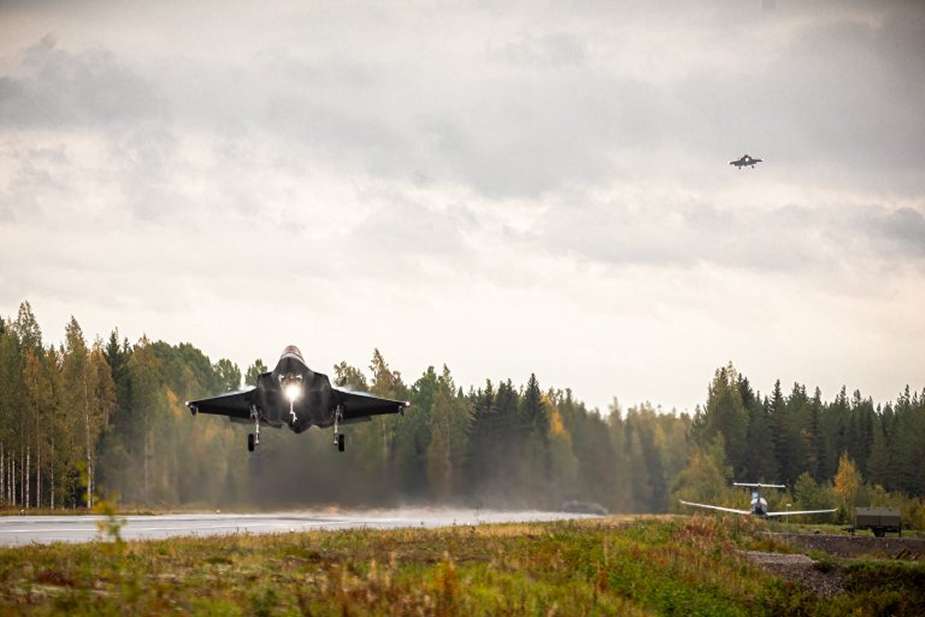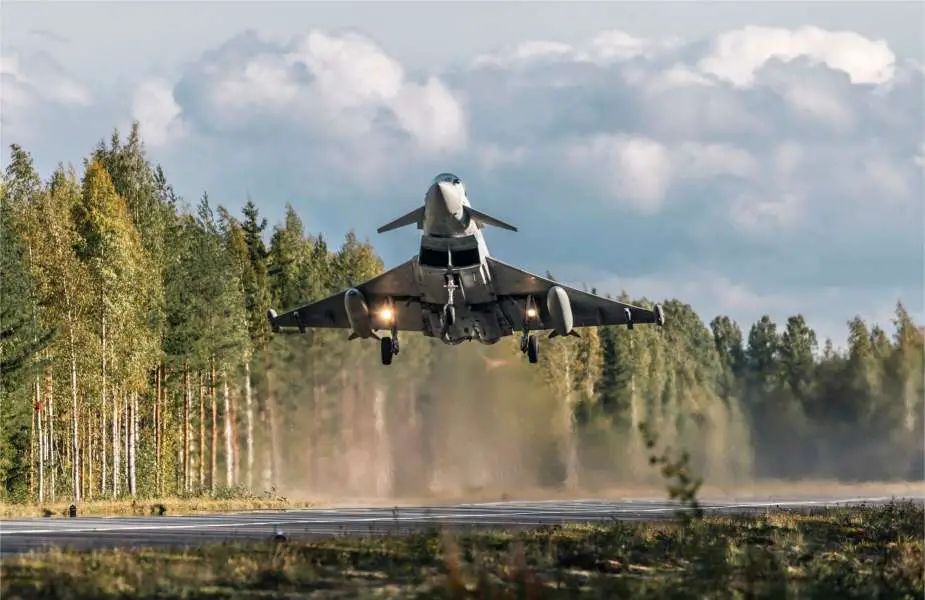Breaking news
F-35A and Typhoon demonstrate landing on Finnish highway.
Lockheed Martin's F-35A fighter jets and Typhoon fighter jets have successfully landed on regular roads for the first time. These feats were part of military exercises conducted in Tervo, Finland, and marked an advancement in military aviation tactics. The exercises were not only a demonstration of expertise but also a strategic move to improve survivability and operational flexibility.
Follow Air Recognition on Google News at this link
 Norwegian F-35A performing a "touch and go" on a highway in Finland for the first time (Picture source: Norwegian Armed Forces )
Norwegian F-35A performing a "touch and go" on a highway in Finland for the first time (Picture source: Norwegian Armed Forces )
On September 21, the Norwegian Ministry of Defense announced that two F-35A Lightning II fighter jets from the Royal Norwegian Air Force landed on a highway in Tervo as part of a military exercise. The event, captured by the Norwegian military, was hailed by officials as a development that would "increase survivability during conflict by reducing vulnerable time spent on the ground." After landing, the aircraft underwent "hot pit refueling" with its engines running before taking off again. This event was particularly noteworthy because Finland, a recent NATO member, shares a 1,300-kilometer border with Russia and plans to purchase 64 F-35 fighter jets from Lockheed Martin.
Typhoon fighter jets also demonstrated their ability to land and take off from a regular road in Tervo. The RAF is focusing on strategies to outmaneuver adversaries and survive attacks by dispersing to remote locations and operating with minimal support. The road used for the exercise is usually open for regular traffic but is specially designed as an emergency landing strip for aircraft. Defense sources cited Russian aggression in Eastern Europe as a motivating factor for these exercises, emphasizing the need to be more unpredictable in aircraft deployment.
Landing on traditional roads allows military aircraft to be less dependent on established airbases, which are often prime targets during conflicts. This increases the survivability of both the aircraft and pilots. It also provides the military with greater flexibility in choosing landing sites, thereby enabling rapid response to changing tactical situations. Using multiple types of landing sites, including roads, makes it more challenging for adversaries to predict military movements, thereby offering a strategic advantage.
However, landing on a conventional highway also has some disadvantages. The road must still be well-maintained; fighter jets cannot land on just any highway without a minimum level of maintenance and preparation. Additionally, this type of landing requires specialized training for the pilot. Landing procedures differ, landmarks are not the same, and a certain level of expertise must be acquired. Hence, the importance of this training exercise.
The tactic of using roads for aerial operations is not new and was employed during the Cold War to make it more difficult for the enemy to locate aircraft. Its revival indicates a renewed focus on versatile and adaptive strategies in the face of evolving threats.
The successful landings and take-offs of F-35A and Typhoon fighter jets on traditional roads underscore the growing need for flexibility and unpredictability in military operations, particularly in the context of increasing geopolitical tensions. As nations continue to innovate and adapt, the use of traditional roads for military aviation operations is likely to become an integral part of modern warfare strategies.

Typhoon performing a "touch and go" on a highway in Finland (Picture source: RAF )


























